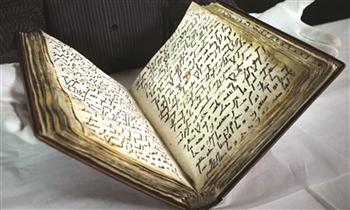Turkey Refuses to Lend Artifacts to British Museum Exhibition
 According to Britain-based The Art Newspaper, Turkey is refusing to lend artifacts to leading British and American museums until the issue of disputed antiquities is resolved. The ban means Turkey will not lend artifacts to the Metropolitan Museum of Art in New York and London’s British Museum and Victoria and Albert Museum (V&A), reported The Art Newspaper.
According to Britain-based The Art Newspaper, Turkey is refusing to lend artifacts to leading British and American museums until the issue of disputed antiquities is resolved. The ban means Turkey will not lend artifacts to the Metropolitan Museum of Art in New York and London’s British Museum and Victoria and Albert Museum (V&A), reported The Art Newspaper. The British Museum had asked for 35 items for the exhibition “Hajj: Journey to the Heart of Islam” to be loaned through April 15. Although Turkish museums were agreeable to the loans, the Ministry of Culture blocked them, leaving the British Museum to find alternative artifacts on short notice, according to the article.
As part of the growing Turkish campaign, loans have been blocked to museums with disputed objects in their collections, said the article.
The Met has confirmed that a dozen antiquities are now being claimed by Turkey but would not identify the individual items. A museum spokeswoman said, “The matter is under discussion with the Turkish authorities,” as quoted by The Art Newspaper. This month, the Met is due to open “Byzantium and Islam” (March 14 to July 8). Many loans are coming from the Benaki Museum in Athens, with none requested of Turkish museums.
The Art Newspaper reported: “Tolga Tüylüoğlu, the head of the Turkish government’s culture and tourism office in London, confirmed that claims for the return of two artifacts in the British Museum and V&A are being pursued. Although there is a ‘good relationship’ between Turkish and British cultural organizations, his government wants to resolve issues over the two antiquities ‘before discussing loans for exhibitions.’
The Turkish government wants the British Museum to return a carved stele (stone slab). Dating from the first century BC, it depicts King Antiochus I Epiphanes greeting Herakles-Verethragna. The stele was first recorded in 1882 when it was found in a field in Selik, near the town of Samsat in modern Turkey. The carved, sculpted relief, which is 4 feet high, had been used as an olive oil press and a large hole had been drilled through its centre. It was bought in 1911 by the archaeologist Leonard Woolley, who was digging in Carchemish with the permission of the Ottoman authorities.
“When the First World War broke out, the area around Carchemish was fought over. After the war, the archaeological store was in Syria, then administered by the French. In 1927, Woolley exported the stele with the permission of the French authorities and it was bought by the British Museum.”
ISTANBUL - Hürriyet Daily News
Last modified onSaturday, 06 May 2017 10:07
Latest from Admin TOA
- From Dream to Reality, from Muş to Illinois: Zellano Home, the Largest Furniture Store Under One Roof in the USA!
- 300 migrants to be housed at shuttered Catholic church on Northwest Side in Chicago
- Turkish Stand-Up Sensation Hasan Can Kaya Embarks on U.S. Tour with Art Evi Production, in212 Production, and TAAS New York
- "Lean Startup, To Lean Company, To Rich Exit" by Dr. Kenan Sahin is released with Forbes Books
- LOSEV USA Ramadan Campaign Let the Children Heal First with Your Ramadan Donations
